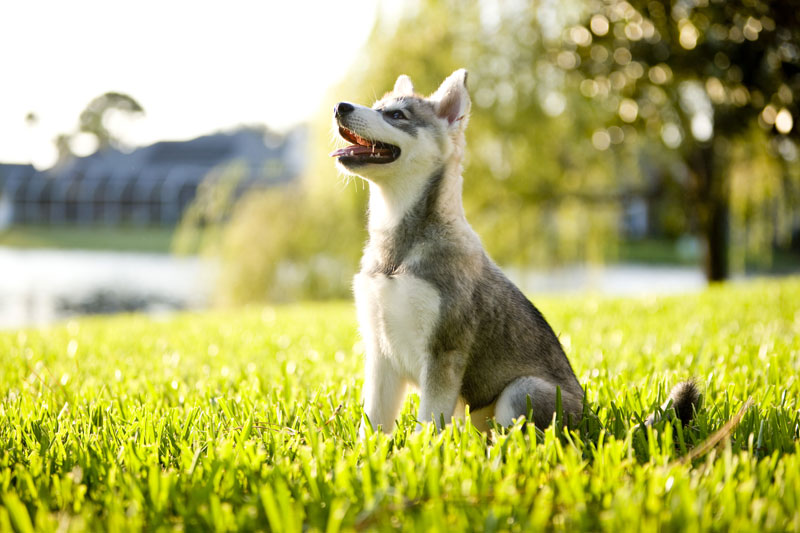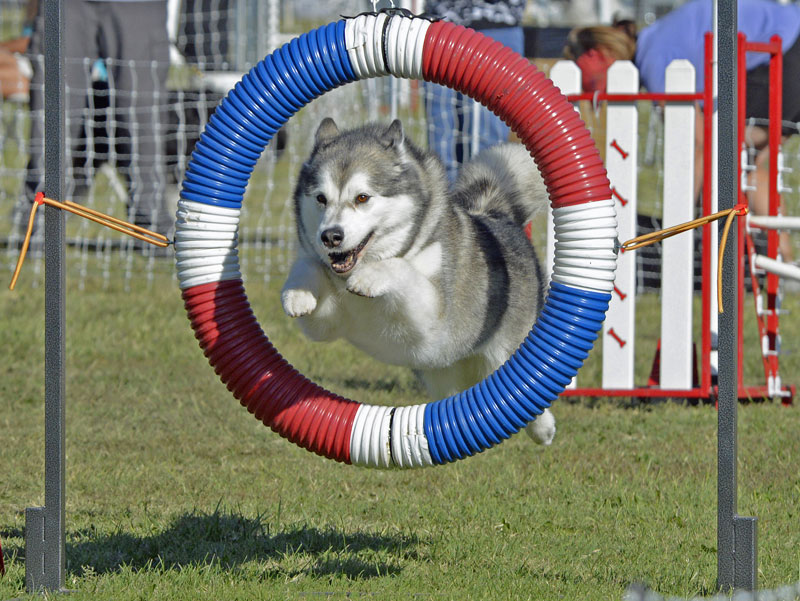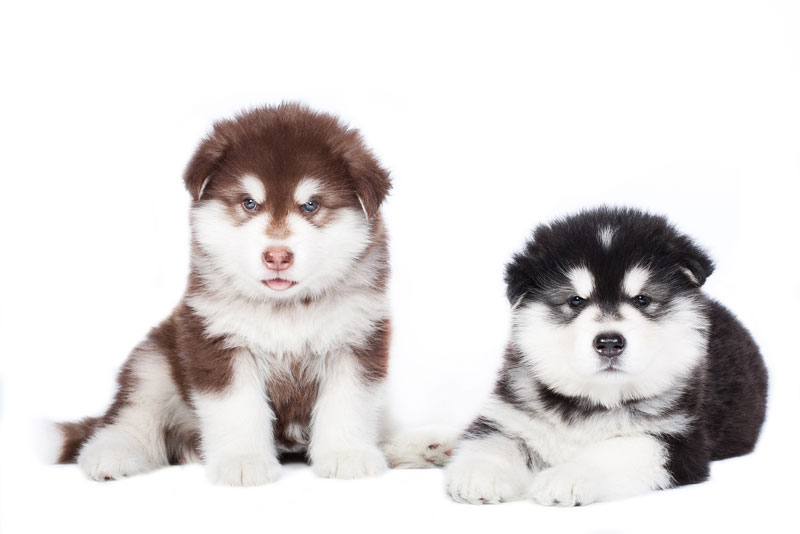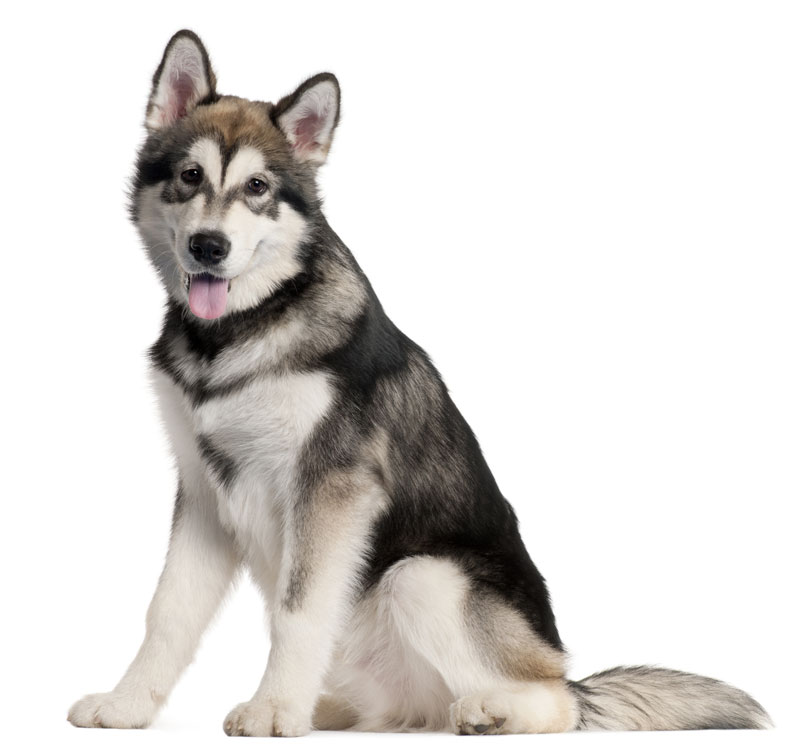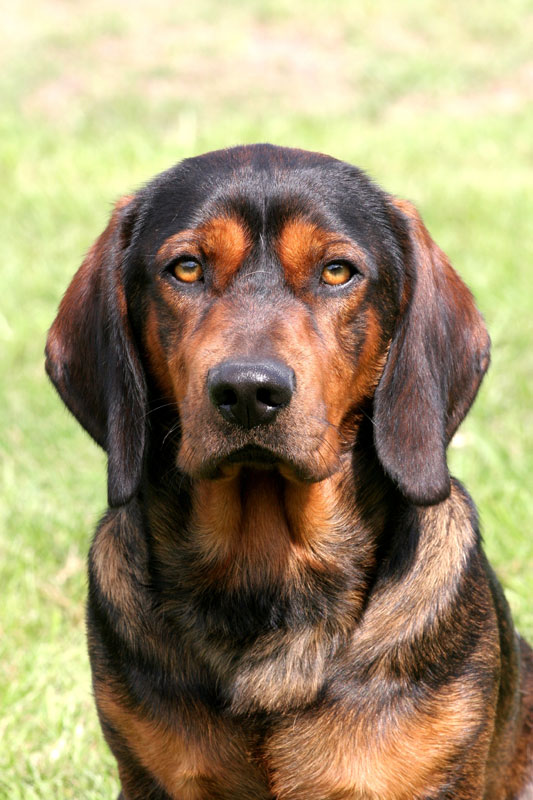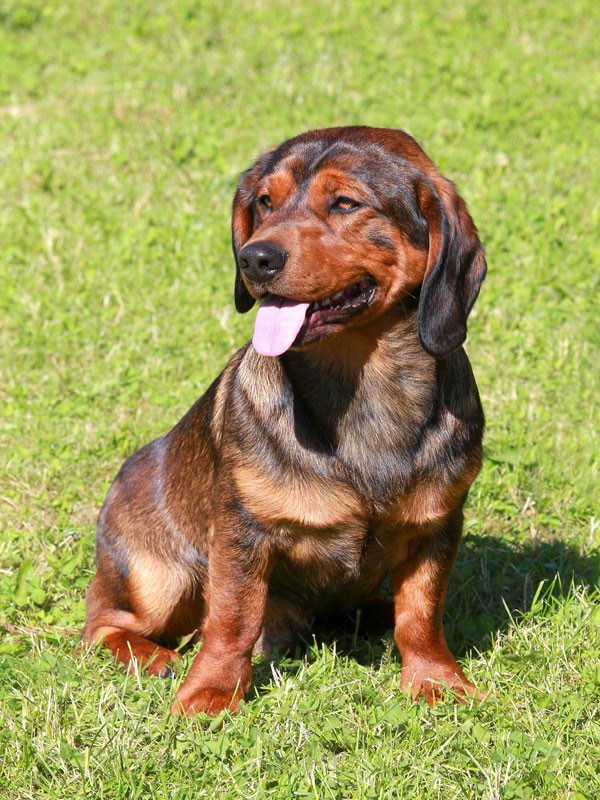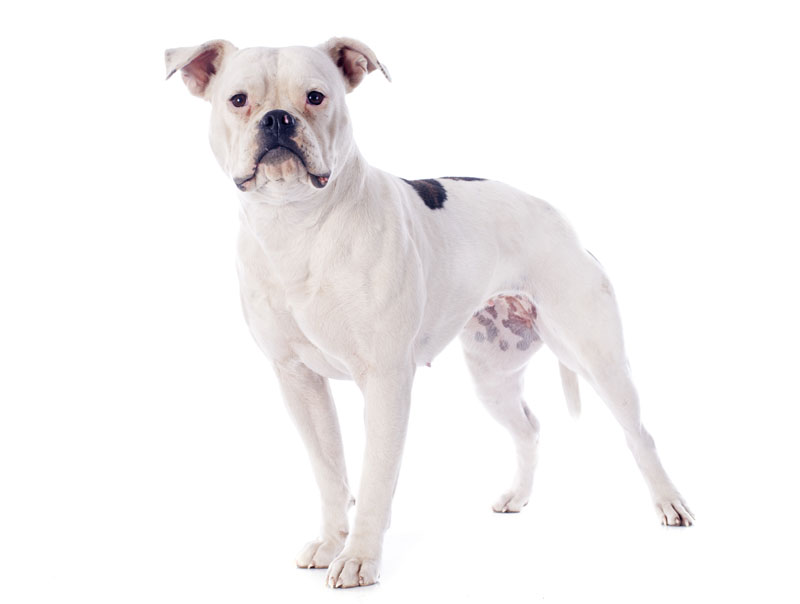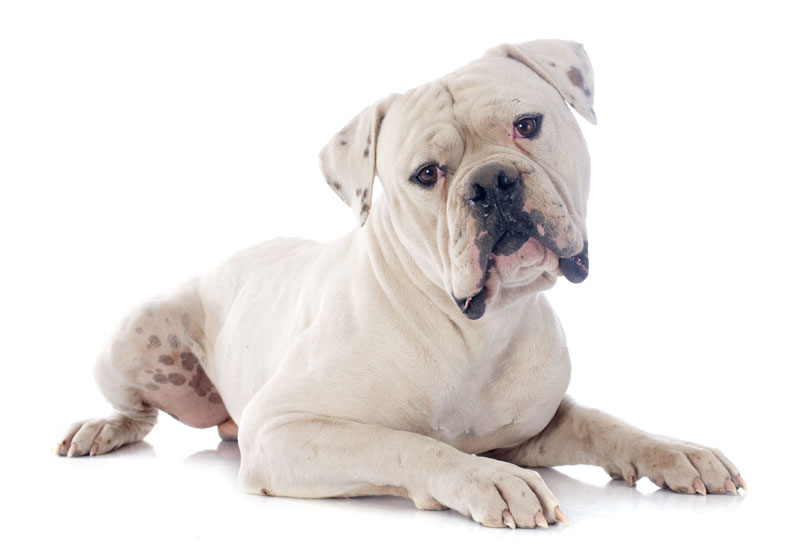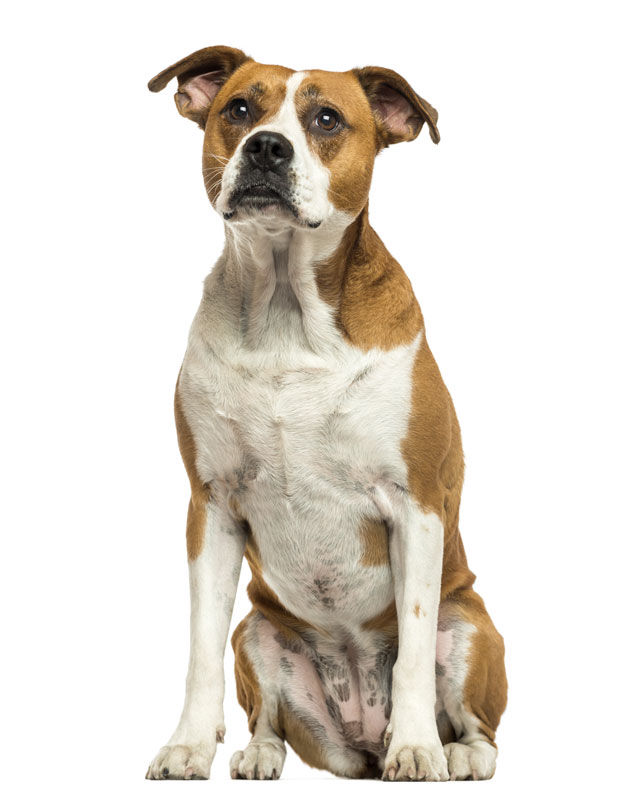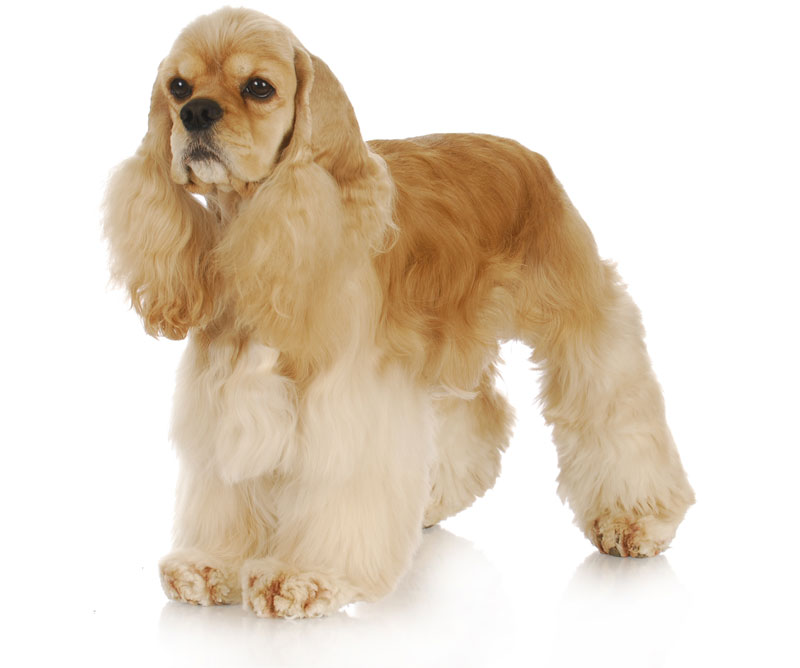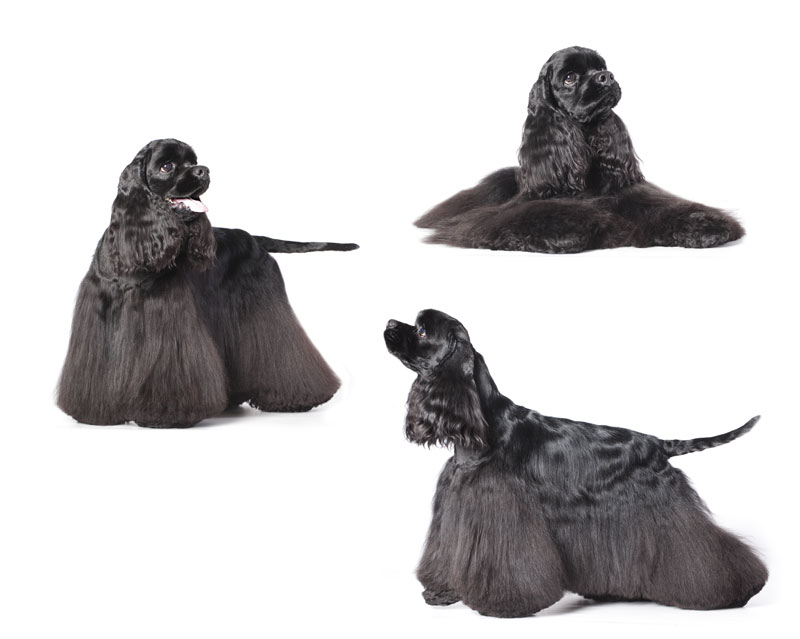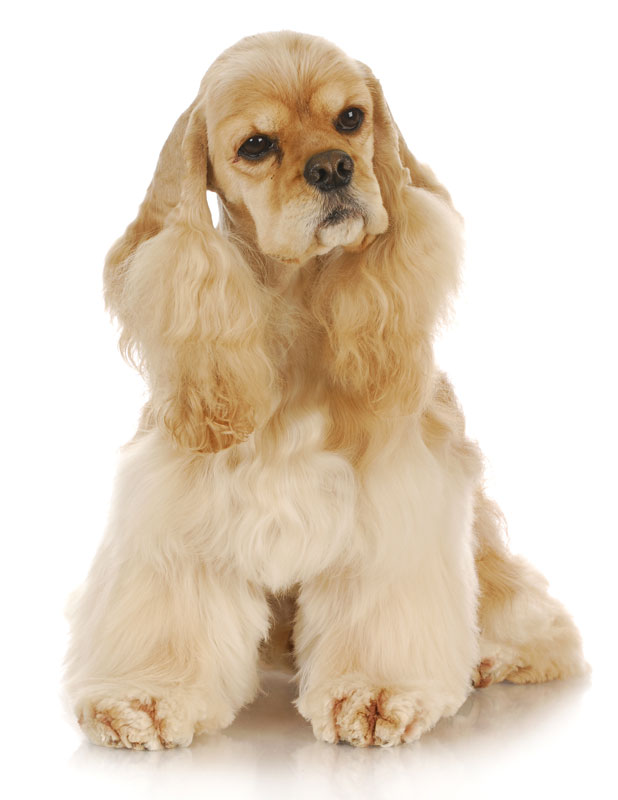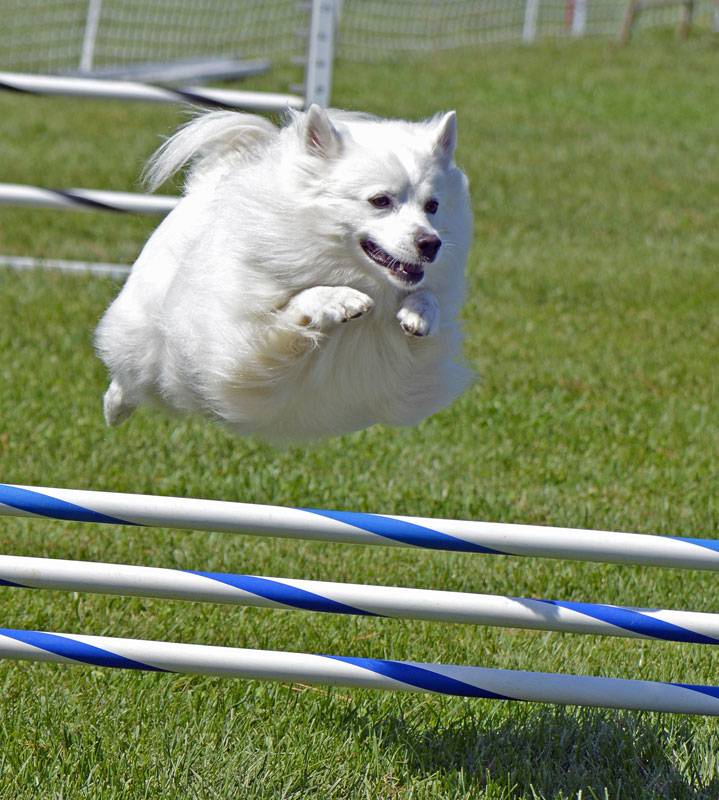Super User
Alaskan Klee Kai
The Alaskan Klee Kai is a spitz type dog breed, developed in the 1970s to create a companion sized dog resembling the Alaskan Husky (a mixed breed of dog used for sled racing). It is an energetic, intelligent, apartment-sized dog with an appearance that reflects its northern heritage. The breed was developed with Siberian Husky and Alaskan Husky Huskies, using Schipperke and American Eskimo Dog to bring down the size without dwarfism. She bred these dogs in private until she released them to the general public in 1988. Originally called the Klee Kai, the breed split into Alaskan Klee Kai and Klee Kai for political reasons in 1995. The breed consolidated as its current name in 2002. The Alaskan Klee Kai was officially recognized by the American Rare Breed Association (ARBA) in 1995 and by the United Kennel Club (UKC) on January 1, 1997. This double coat allows them to have thermal protection from extreme hot and cold weather.Like the Siberian Husky, the Alaskan Klee Kai typically requires relatively easy care. They are extremely clean. Most do not like wet feet and will spend hours daily grooming themselves. Alaskan Klee Kai, like many other northern breeds, do not have a typical "doggy odor" or "doggy breath." Most Klee Kai will seldom require a bath. They are rather efficient, so no grooming is needed. You never want to shave an Alaskan Klee Kai unless for medical reasons. They need their coat to keep them cool and to protect their skin. Also like Siberians (and unlike short haired dogs who Coat#Shedding all year), the Klee Kai blows its coat twice a year. Of course, the size of the dogs limits the amount of fur blown. It is best to Dog grooming the dog on a regular basis during this time. Some of the longer haired dogs can become matted if not groomed. Most Klee Kai will assist the loss of hair by rubbing against things such as fences. Other than this period of blowing coat, the Klee Kai is very self-sufficient. The normal preventative measures should be taken, such as trimming of nails, normal grooming in the form of brushing. This process is especially important in the bonding process.The Alaskan Klee Kai has a double coat; an undercoat that is short and soft and an outer coat that is made of longer guard hairs. This double coat allows them to have thermal protection from extreme hot and cold weather.
Health
Previously the Alaskan Klee Kai was thought to have been remarkably free of genetic defects when compared to other small dog breeds. Currently there is a growing concern among veterinarians that the breeding for smaller size has caused a growth in the percentage of puppies dying of hydrocephalus. Studies are on going at this time.Other health concerns that the breed may suffer from have yet to be discovered because of the breed's relatively young age and small gene pool. Responsible Alaskan Klee Kai breeders have their dogs health tested and registered with OFA for cardiac, patellar, and thyroid issues. They are now accepted by CHIC also, if they have passed their OFA exams and eye exam by CERF.
Alaskan Malamute
The Alaskan Malamute is a generally large breed of domestic dog (Canis lupus familiaris) originally bred for use hauling heavy freight because of their strength and endurance, and later an Alaskan sled dog. They are similar to other arctic breeds, like the Canadian Eskimo Dog, the Siberian Husky and the Samoyed.
History
In some accounts, the Alaskan Malamute is described as a descendant of dogs of the Mahlemut (now known as Kuuvangmiut or more commonly Kobuk) group of in upper western Alaska. These dogs had a prominent role with their human companions – as a utilitarian dog, working, hunting, and living alongside humans. The dogs were renowned for their excellent hunting abilities and were used to hunt large predators such as bears. They also aided their owners in finding seals by alerting to seal blow holes. The interdependent relationship between the Mahlemut and their dogs fostered prosperity among both and enabled them to flourish in the inhospitable land above the Arctic Circle.For a brief period during the Klondike Gold Rush of 1896, the Malamute and other sled dogs became extremely valuable to recently landed prospectors and settlers, and were frequently crossbred with imported breeds. This was often an attempt to improve the type or to make up for how few true Malamutes were available to purchase. This seems to have had no long-standing effect on the modern Malamute, and 2004 DNA analysis shows that Malamutes are one of the ancient dog breeds, genetically distinct from other dog breeds. A study in 2013 showed that the Alaskan Malamute has a similar east Asian origin to, but is not clearly related to, the Greenland Dog and the Inuit Sled Dog (Canadian Eskimo Dog), but contains a possible admixture of the Siberian Husky.(AKC) "Breed recognition came in 1935, largely through the efforts of Mrs. Eva B. Seeley. At that time many dogs were of unknown ancestry. Those who appeared purebred were used for breeding, others weeded out. After a few years the registry was closed." "Losses from service in World War II all but eliminated the breed. In 1947 there were estimated to be only about 30 registered dogs left, so the stud book was reopened. Mr. Robert J. Zoller became involved in the breed and took this opportunity to combine M’Loot and Hinman/Irwin dogs with selected Kotzebues to create what became the Husky-Pak line. All modern Malamutes are descended from the early strains, and show combinations of characteristics in greater or lesser degree. Thus the natural differences we see today." The Malamute dog has had a distinguished history; aiding Richard E. Byrd to the South Pole, and the miners who came to Alaska during the Klondike Gold Rush of 1896, as well as serving in World War II primarily as search and rescue dogs in Greenland, although also used as freighting and packing dogs in Europe. This dog was never destined to be a racing sled dog; it was used for heavy freighting, pulling hundreds (maybe thousands) of pounds of supplies to villages and camps in groups of at least 4 dogs for heavy loads.The Alaskan Malamute is a member of the Spitz group of dogs, traced back 2,000 to 3,000 years ago to the Mahlemuits tribe of Alaska.In 2010 the Alaskan Malamute was named the official state dog of Alaska.
Health
Longevity
There is only one known health survey of Alaskan Malamutes, a 2004 UK Kennel Club survey with a small sample size of 14 dogs. The median lifespan of 10.7 years measured in that survey is typical of a breed their size, however this study had too small of a sample size to be considered reliable and much anecdotal evidence suggests they have on average one of the longest lifespans of large dogs, up to 15 years. The major cause of death was cancer (36%).
Morbidity
The most commonly reported health problems of Alaskan Malamutes, in the 2004 UK Kennel Club survey (based on a sample size of 64 dogs) were musculoskeletal (Hip dysplasia (canine)), and hereditary cataracts. There are additional health issues in the breed whose origins are unknown at this time including varied seizure disorders found in young puppies as well as adults, Epilepsy, congenital heart problems, kidney problems and skin disorders.Other health issues in Malamutes include Elbow dysplasia, Polyneuropathy in dogs and cats, chondrodysplasia, heart defects, and eye problems (particularly cataract and progressive retinal atrophy). A growing problem among arctic dog breeds, including the Alaskan Malamute, but especially their cousin, the Samoyed, is canine diabetes with onset occurring typically in middle age (5 to 7 years)
Alpine Dachsbracke
The Alpine Dachsbracke (German language Alpenländische Dachsbracke) is a small breed of dog of the scent hound type originating in Austria. The Alpine Dachsbracke was bred to track wounded deer as well as boar, hare, and fox. It is highly efficient at following a trail even after it has gone cold. The Alpine Dachsbracke is very sturdy, and Austria is said to be the country of origin.
History
Alpine Dachsbrackes, as with the other Bracke, can be dated back to the middle of the 19th century. The Dachsbrache were bred down in size by crossing the larger dogs with Dachshunds. It once was a favorite of German royalty. During the 1880s, Alpine Dachsbrackes accompanied Crown Prince Rudolf of Habsburg on hunting trips to Egypt and Turkey.The Fédération Cynologique Internationale recognizes the Alpine Dachsbracke in Group 6 Scenthounds, Section 2 “Leash Hounds” with the Bavarian Mountain Scenthound (Bayrischer Gebirgsschweisshund, no. 217) and the Hanoverian Scenthound (Hannover'scher Schweisshund, no. 213). The only major kennel club in the English-speaking world to recognise the Alpine Dachsbracke is the United Kennel Club (US) in their Scenthound Group, but they use the Fédération Cynologique Internationale breed standard. The breed is also recognized by a number of minor registries, hunting clubs, and internet-based dog registry businesses.
Alpine Spaniel
The Alpine Spaniel is an extinct breed of dog which was used in SAR dog by the Augustinian canons regular, who run hospices in the region around the Great St. Bernard Pass. The spaniel was a large dog notable for its thick curly coat. One of the most famous specimens of the Alpine Spaniel is, however his preserved body has been modified on more than one occasion to fit with descriptions of the extinct breed from earlier time periods. Due to the conditions in the Alps, and a series of accidents, extinction was discussed as a possibility by authors during the 1830s, and at some point prior to 1847 the entire breed was reduced to a single example due to disease. Evidence held at the Natural History Museum in Bern show that two distinct breeds of dog were being used in the area during this time period. The breed is thought to be the predecessor to the modern St. Bernard and the Clumber Spaniel.
History
Alpine spaniels were kept by the canons of the monasteries in the Alps in order to search for travellers during heavy snow storms, including the Great St. Bernard Hospice in the Great St Bernard Pass between Italy and Switzerland. The dogs would be dispatched in pairs to search for fallen travellers, and were trained so that upon finding them would return to the canons in order to lead rescuers back to the unfortunate individuals. The Alpine breed was also used as a Guard dog to guard sheep and cattle of mountainous regions, including the Himalayas.Between 1800 and 1814, a dog named Barry lived as a rescue dog at the hospice, and was famous enough at the time for his body to be preserved at the Natural History Museum of Bern. However during the preservation, the taxidermist and the director of the Museum agreed to modify the body towards what they thought was a good example of the breed during that period. The head itself was further modified in 1923 to represent the Saint Bernard of that era. Prior to this the skull was a great deal flatter with a moderate stop. In 1829 a English Mastiff like dog was brought from the Great St Bernard Hospice and was exhibited in London and Liverpool to thousands of people. This publicised the existence of an Alpine Mastiff, but drawings of the dog did not match descriptions of the Alpine Spaniel from before the exhibition, and the descriptions of the Spaniel were ridiculed by later publications.
American Bobtail
The American Bobtail is an uncommon breed of domestic cat which was developed in the late 1960s. It is most notable for its stubby "bobbed" tail about one-third to one-half the length of a normal cat's tail. This is the result of a cat body type genetic mutation affecting the tail development, similar to that of a Manx (cat). and the American Cat Fanciers Association (ACFA). The breed is technically now also sanctioned in the Cat Aficionado Association (CAA) of China, by virtue of the CAA having adopted all of ACFA's breed standards; it is unknown if any specimens are actually in China. The breed is "recognized" (as existing), as both American Bobtail Longhair and American Bobtail Shorthair, in the Germany-based World Cat Federation (WCF), but is not "accepted" for competition
American Cocker Spaniel
The American Cocker Spaniel is a breed of sporting dog. It is a spaniel type dog that is closely related to the English Cocker Spaniel; the two breeds diverged during the 20th century due to differing breed standards in America and the UK. In the United States, the breed is usually called the Cocker Spaniel, while elsewhere in the world, it is called the American Cocker Spaniel in order to differentiate between it and its English cousin. The word cocker is commonly held to stem from their use to hunt woodcock in England, while spaniel is thought to be derived from the type's origins in Spain.The first spaniel in America came across with the Mayflower in 1620, but it was not until 1878 that the first Cocker Spaniel was registered with the American Kennel Club (AKC). A national breed club was set up three years later and the dog considered to be the father of the modern breed, Ch. Obo II, was born around this time. By the 1920s the English and American varieties of Cocker had become noticeably different and in 1946 the AKC recognised the English type as a separate breed. It was not until 1970 that The Kennel Club in the UK recognised the American Cocker Spaniel as being separate from the English type. The American Cocker was the most popular breed in the United States during the 1940s and 1950s and again during the 1980s, reigning for a total of 18 years. They have also won the List of Best in Show winners of the Westminster Kennel Club Dog Show title at the Westminster Kennel Club Dog Show on four occasions, and have been linked to the President of the United States on several occasions, with owners including Richard Nixon and Harry S. Truman.The breed is the smallest of the sporting dogs recognised by the AKC, and its distinctly shaped head makes it immediately recognisable. In addition, there are some marked differences between it and its English relative. It is a happy breed with average working intelligence, although by being bred to a conformation show breed standard it is no longer an ideal working dog. Members of the breed suffer from a wide variety of health ailments including problems with their hearts, eyes and ears.
History
American Curl
The American Curl is a breed of cat characterized by its unusual ears, which curl back from the face toward the center of the back of the skull. An American Curl's ears should be handled carefully because rough handling may damage the cartilage in the ear. The breed originated in Lakewood, California, as the result of a spontaneous mutation. In June 1981, two stray kittens were found and taken in by the Ruga family. The kittens were both longhaired, one black and the other black and white. The family named them Shulamith and Panda respectively, but Panda disappeared several weeks later, making Shulamith the foundation female of the American Curl breed.
History
In 1986, an American Curl was exhibited at a cat show for the first time, and in 1992, the longhaired American Curl was given championship status by The International Cat Association (TICA). In 1999, the American Curl became the first breed admitted to the Cat Fanciers' Association (CFA) Championship Class with both longhair and shorthair divisions.The American Curl is a medium sized cat (5–10 lbs), and does not reach maturity until 2–3 years of age. They are strong and healthy.American Curl kittens are born with straight ears, which begin to curl within eighty-two days. After four months, their ears will not curl any longer, and should be hard and stiff to the touch. A pet quality American Curl may have almost straight ears, but showcats must have ears that curl in an arc between 90 and 180 degrees. A greater angle is preferable, but cats will be disqualified if their ears touch the back of their skulls.Both longhaired and shorthaired American Curls have soft, silky coats which lie flat against their bodies. They require little grooming and enjoy spending time with their owners.The American Curl, while still an uncommon breed, is found across the world in the United States of America, Spain, France, Japan, Russia, and many other countries.
Health
Due to its large genetic pool with non-pedigree cats, the American Curl is generally a healthy breed. These cats' ears however require frequent cleaning to prevent infections, and needs gentle handling to prevent damage.
Various matings between curled cats and normal cats revealed a dominant inheritance of the curl gene. Sex linked distribution was not found. The mutant gene was designated as curl and is symbolized by Cu. Another mutation of the ear pinna was found in Scottish Fold cats. In these cats anomalies were rarely found when heterozygous, however in homozygous (FdFd) cats, animals suffer from dysplasia of the lower limbs and tail. So the question arises if homozygous curls (CuCu) could also be affected by cartilage formation defects and bone abnormalities. However observations of a CuCu cat over two years showed no sign of anomaly.
In popular culture
In the webcomic Achewood, the character Ray Smuckles has admitted to being an American Curl.
American English Coonhound
The English Coonhound, also referred to as the American English Coonhound (by the American Kennel Club only) or the Redtick Coonhound, is a dog breed of dog. It is a type of coonhound that is typically bred in the Southern United States. It has origins from hunting hounds brought to America by settlers during the 17th and 18th centuries, resulting in the dogs known as the "Virginia Hounds". The breeds first recognition came from the United Kennel Club in 1905 as the English Fox and Coonhound. Further recognition has been granted in recent years by the American Kennel Club, first in the Foundation Stock Service and in 2011 as a fully recognized member of the hound group.The breed is of medium height and proportionate weight, and their Coat come predominantly in three types, redtick, bluetick and a tricolor tick pattern. They have a high prey drive and are used in various roles in hunting, including treeing. Health issues that the breed suffers from include overheating whilst out on summer hunting expeditions.
History
The breed traces its ancestry from Foxhounds brought to the United States by European settlers during the 17th and 18th centuries. The breed developed from the "Virginia Hounds", which were developed over time from dogs imported to the United States by Robert Brooke, Thomas Walker (explorer) and first President of the United States, George Washington. The dogs had to adapt to more rigorous terrain, with the breed being specifically bred over time to suit these new conditions. It was recognized by the United Kennel Club (UKC) in 1905 as the English Fox and Coonhound. It was moved up to the Miscellaneous Class on 1 January 2010. Following the recognition of the breed by the AKC in the hound group on 30 June 2011 as the 171st breed,
Health
English Coonhounds can be prone to overheating while on coon hunts during the summer months in the Southern United States.
American Eskimo Dog
The American Eskimo Dog is a breed of companion dog originating in Germany. The American Eskimo is a member of the Spitz family. Despite its name and appearance, the American Eskimo dog is not from Alaska; the dog's heritage is traced back to Northern Europe. The breed's progenitors were German Spitz, but due to anti-German prejudice during the First World War, it was renamed "American Eskimo Dog". Although modern American Eskimos have been exported as German Spitz Gross (or Mittel, depending on the dog's height), the breed standards are actually significantly different. In addition to serving as a watchdog and companion, the American Eskimo dog also achieved a high degree of popularity in the 1930s and 1940s United States as a circus performer.There are three size varieties of the American Eskimo breed, the toy, miniature and the standard. They share a common resemblance with Japanese Spitz and Samoyed.Miniature American Eskimos, with their high intelligence and inquisitive nature, will love to "investigate". If they find something very interesting they will often want their owner or handler to investigate as well, and will at times, not let the "matter" go until the person complies. You will often find this behavior when it comes to children; for instance, if a baby or child is crying, the American Eskimo will want you to see what the problem is and will not stop worrying until you do. The American Eskimo being so "tuned in" is one of the characteristics that makes them a desirable breed around children.
History
The American Eskimo Dog was originally bred to guard people and property and, therefore, is territorial by nature and a valiant watchdog. They are not considered an aggressive breed. But, due to the breed's watchdog history, American Eskimos are generally quite vocal, barking at any stranger who comes in proximity to their owners' territory.In Northern Europe, smaller Spitz were eventually developed into the various German Spitz breeds. European immigrants brought their Spitz pets with them to the United States, especially New York, in the early 1900s, "all of them descended from the larger German Spitz, the Keeshond, the white Pomeranian, and the Italian Spitz, the Volpino Italiano."Although white was not always a recognized color in the various German Spitz breeds, it was generally the preferred color in the US. In a display of patriotism in the era around World War I, dog owners began referring to their pets as American Spitz rather than German Spitz.After World War I, the small Spitz dogs came to the attention of the American public when the dogs became popular entertainers in the American circus. In 1917, the Cooper Brothers’ Railroad Circus featured the dogs. A dog named Stout's Pal Pierre was famous for walking a tightrope with the Barnum and Bailey Circus in the 1930s, and also contributing to their popularity, they sold puppies after the show. Due to the popularity of the circus dogs, many of today's American Eskimo Dogs can trace their lineage back to these circus dogs. At that time there was no official breed club and no breed standard, and dogs were accepted for registration as single dogs, based on appearance. In 1970 the National American Eskimo Dog Association (NAEDA) was founded, and single dog registrations ceased. In 1985 the American Eskimo Dog Club of America (AEDCA) was formed by fanciers who wished to register the breed with the American Kennel Club (AKC). Following the AKC's requirements for breed recognition, the AEDCA collected the pedigree information from 1,750 dogs that now form the basis of the AKC recognized breed, which is called the American Eskimo Dog. The breed was recognized by the American Kennel Club in 1995. The stud book was opened from 2000 to 2003 in an attempt to register more of the original UKC registered lines, and today many American Eskimo Dogs are dual-registered with both American kennel clubs. but is not recognized elsewhere in the world
The American Eskimo Dog is not entirely an internationally recognized breed, and since neither of the American kennel clubs are affiliated with the Fédération Cynologique Internationale, fanciers wishing to participate in certain international dog shows will register their American Eskimo Dogs as the very similar German Spitz. This is done only by individuals wishing to participate in dog sports in international shows, and does not mean that the American Eskimo Dog and the German Spitz are the same. Although the American Eskimo is known as the German Spitz in several countries outside of the United States, the two breeds have actually developed somewhat differently since the American Eskimo was relocated to North America, over a century ago. It is not uncommon for German Spitz breeders to incorporate imported American Eskimo bloodlines into their breeding program to broaden the gene pool, and vice versa.
Health
The American Eskimo is a hardy breed with an average life span of 16 years. This breed tends to become overweight easily, so proper diet and exercise is needed to maintain an overall well being. Health testing should be performed by all responsible breeders and anyone purchasing a puppy should be aware of the genetic problems which have been found in some individuals of the breed, such as PRA (Progressive Retinal Atrophy), luxating patella, and Hip dysplasia (canine)). None of these problems are common and the breed is generally very healthy. In addition to the rarer problems mentioned, the breed can have a tendency towards allergies and most commonly, tear-staining. This breed also is known in some cases to have dental issues.

